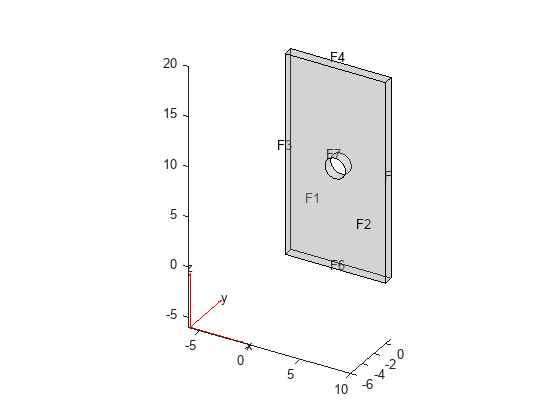electromagneticBC
electromagneticBC will be removed. Use
edgeBC and faceBC
instead. (since R2023a) For more information on updating your code, see Version History.
Syntax
Description
electromagneticBC(
adds a voltage boundary condition to emagmodel,RegionType,RegionID,"Voltage",V)emagmodel. The boundary
condition applies to regions of type RegionType with ID numbers in
RegionID. The solver uses a voltage boundary condition for an
electrostatic analysis.
electromagneticBC(
adds a magnetic potential boundary condition to emagmodel,RegionType,RegionID,"MagneticPotential",A)emagmodel. The solver
uses a magnetic potential boundary condition for a magnetostatic analysis.
electromagneticBC(
adds a surface current density boundary condition to emagmodel,RegionType,RegionID,"SurfaceCurrentDensity",K)emagmodel. The
solver uses a surface current density boundary condition for a DC conduction
analysis.
electromagneticBC(
adds an electric field boundary condition to emagmodel,RegionType,RegionID,"ElectricField",E)emagmodel. The solver
uses an electric field boundary condition for a harmonic analysis with the electric field
type.
electromagneticBC(
adds a magnetic field boundary condition to emagmodel,RegionType,RegionID,"MagneticField",H)emagmodel. The solver
uses a magnetic field boundary condition for a harmonic analysis with the magnetic field
type.
electromagneticBC(
adds an absorbing boundary condition to emagmodel,RegionType,RegionID,"FarField","absorbing","Thickness",h)emagmodel and specifies the
thickness of the absorbing region. The solver uses an absorbing boundary condition for a
harmonic analysis.
electromagneticBC(___,InternalBC=
applies boundary conditions on internal edges. Use this syntax with any of the input
argument combinations in the previous syntaxes.intBCFlag)
electromagneticBC(___,"Vectorized","on") uses
vectorized function evaluation when you pass a function handle as an argument. If your
function handle computes in a vectorized fashion, then using this argument saves time. For
details on this evaluation, see More About and Vectorization.
emagBC = electromagneticBC(___)
